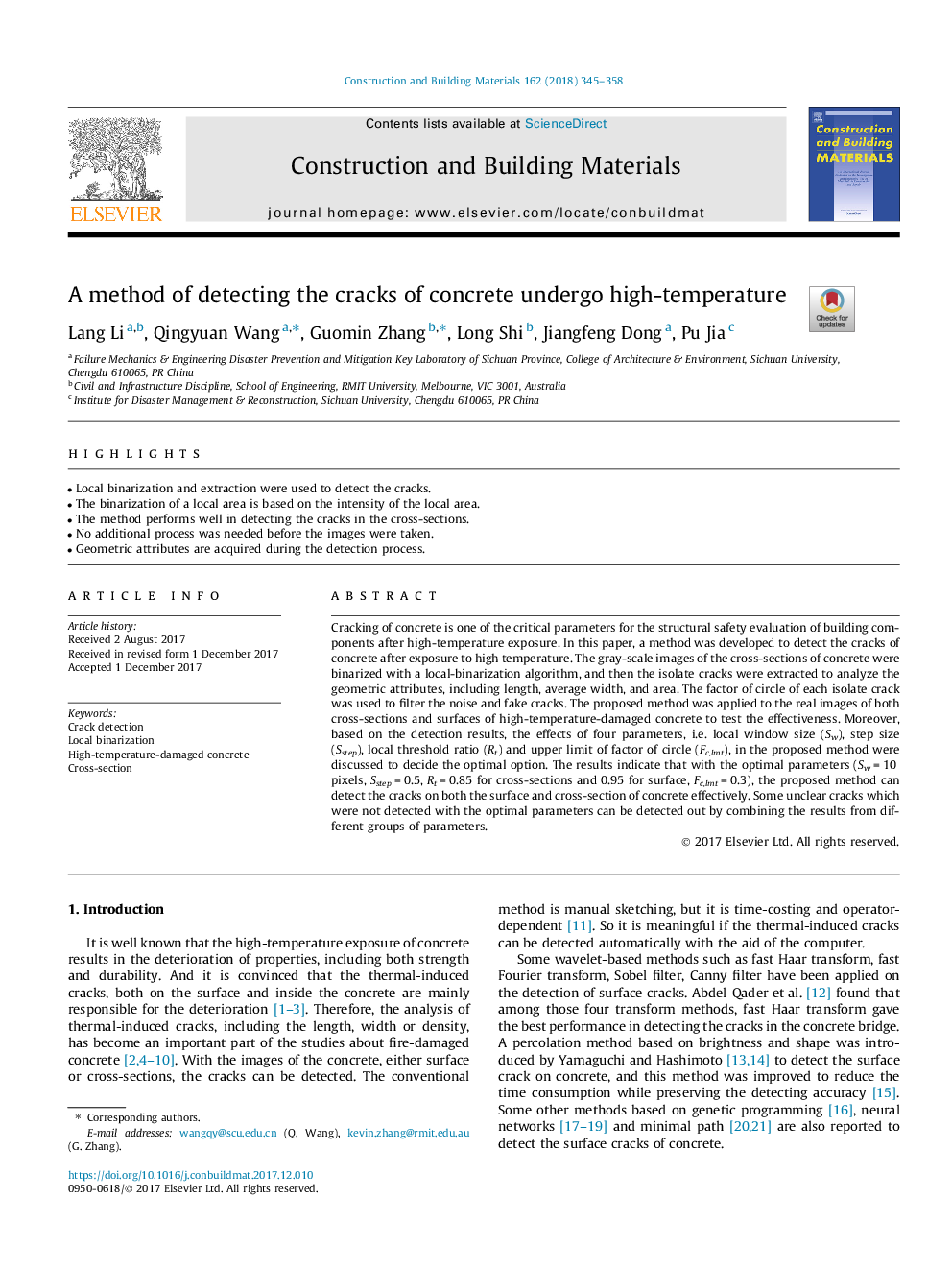| Article ID | Journal | Published Year | Pages | File Type |
|---|---|---|---|---|
| 6716510 | Construction and Building Materials | 2018 | 14 Pages |
Abstract
Cracking of concrete is one of the critical parameters for the structural safety evaluation of building components after high-temperature exposure. In this paper, a method was developed to detect the cracks of concrete after exposure to high temperature. The gray-scale images of the cross-sections of concrete were binarized with a local-binarization algorithm, and then the isolate cracks were extracted to analyze the geometric attributes, including length, average width, and area. The factor of circle of each isolate crack was used to filter the noise and fake cracks. The proposed method was applied to the real images of both cross-sections and surfaces of high-temperature-damaged concrete to test the effectiveness. Moreover, based on the detection results, the effects of four parameters, i.e. local window size (Sw), step size (Sstep), local threshold ratio (Rt) and upper limit of factor of circle (Fc,lmt), in the proposed method were discussed to decide the optimal option. The results indicate that with the optimal parameters (Swâ¯=â¯10â¯pixels, Sstepâ¯=â¯0.5, Rtâ¯=â¯0.85 for cross-sections and 0.95 for surface, Fc,lmtâ¯=â¯0.3), the proposed method can detect the cracks on both the surface and cross-section of concrete effectively. Some unclear cracks which were not detected with the optimal parameters can be detected out by combining the results from different groups of parameters.
Keywords
Related Topics
Physical Sciences and Engineering
Engineering
Civil and Structural Engineering
Authors
Lang Li, Qingyuan Wang, Guomin Zhang, Long Shi, Jiangfeng Dong, Pu Jia,
